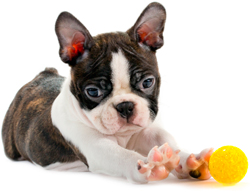 You just brought home your first puppy, and you cannot wait to get started building the bond that will last a lifetime with your new canine companion. Whether your new little one came from a shelter, rescue or reputable breeder you should have already done as much reading about the care, training and needs of a puppy and be prepared for messes, injuries, illnesses and lots of frustration! Meanwhile, you may be wondering just when do you start training him? Considering his entire world was just turned upside down after taking him from his mother, litter mates and humans he knew to bring him into a strange place with strange people, new sounds and smells. The short answer is immediately. Your training starts the moment the puppy officially belongs to you!
You just brought home your first puppy, and you cannot wait to get started building the bond that will last a lifetime with your new canine companion. Whether your new little one came from a shelter, rescue or reputable breeder you should have already done as much reading about the care, training and needs of a puppy and be prepared for messes, injuries, illnesses and lots of frustration! Meanwhile, you may be wondering just when do you start training him? Considering his entire world was just turned upside down after taking him from his mother, litter mates and humans he knew to bring him into a strange place with strange people, new sounds and smells. The short answer is immediately. Your training starts the moment the puppy officially belongs to you!
On The Ride Home
If you are using a vehicle to bring your newest family member home, he should be riding comfortably in a crate or carrier of an appropriate size. He should be able to stand up, turn around and lay down on a soft bed or blanket. Making this space as comfortable as possible is a big first step, so be sure to provide a special chew toy during the ride home.
Make frequent stops, at least every 40 minutes to let him eliminate in a dog friendly rest stop. You are already working on crate training, potty training and leash training in one go! When your puppy potties in the right place, make a big fuss out of it and reward him with either a
high value treat or a very brief play session before heading back to the car.
When You Get Home
The very first thing you should do when you arrive home with your new puppy is walk him around outside first. This will give him the chance to potty, both urinate and defecate, before going inside. Doing so will keep him from having an accident the first time he gets inside! You are already reinforcing good potty habits before he even gets home!
Upon entering your home, your puppy should remain on his leash and you on the other end of it. You can show him to his area, crate or play pen and allow him to explore some without giving him too much freedom. This helps you being in boundary control! He is learning to follow your lead and not stray from your direction while also respecting the home. Do not show him rooms in which he would not be allowed to enter as an adult. These areas can be the kitchen, bathroom, bedrooms, guest rooms or any space you don’t want your pooch to enter. Encourage his learning and respecting of the boundaries the moment he comes indoors.
The First Steps
Even though these small tips will give your puppy a head start with training, it is only the very beginning! Training is on going with your dog until he is completely and fully reliable in his behavior. This can take up to the first two years of his life! In his first week he should be introduced to a schedule of meal times, bed times, play and training sessions, potty times, and bed time. This will help to prevent potty accidents, make his needs more predictable and increase training speed substantially.
Along with the consistency of a daily schedule to stick to, basic obedience should be introduced by his second day with you. Training and play can even be combined into one sessions as learning through positive reinforcement can mean being rewarded with a toy, a brief play session, and over all it is very fun for a puppy! Obedience should include your basic commands of sit, lay down, stay, come when called and leash manners. This strong foundation will encourage reliable behaviors as your puppy becomes a young adult, and you will be amazed at the bond the two of you build together!
Visit Pampered Paw Gifts for Toys, Treats and More for Your New Puppy